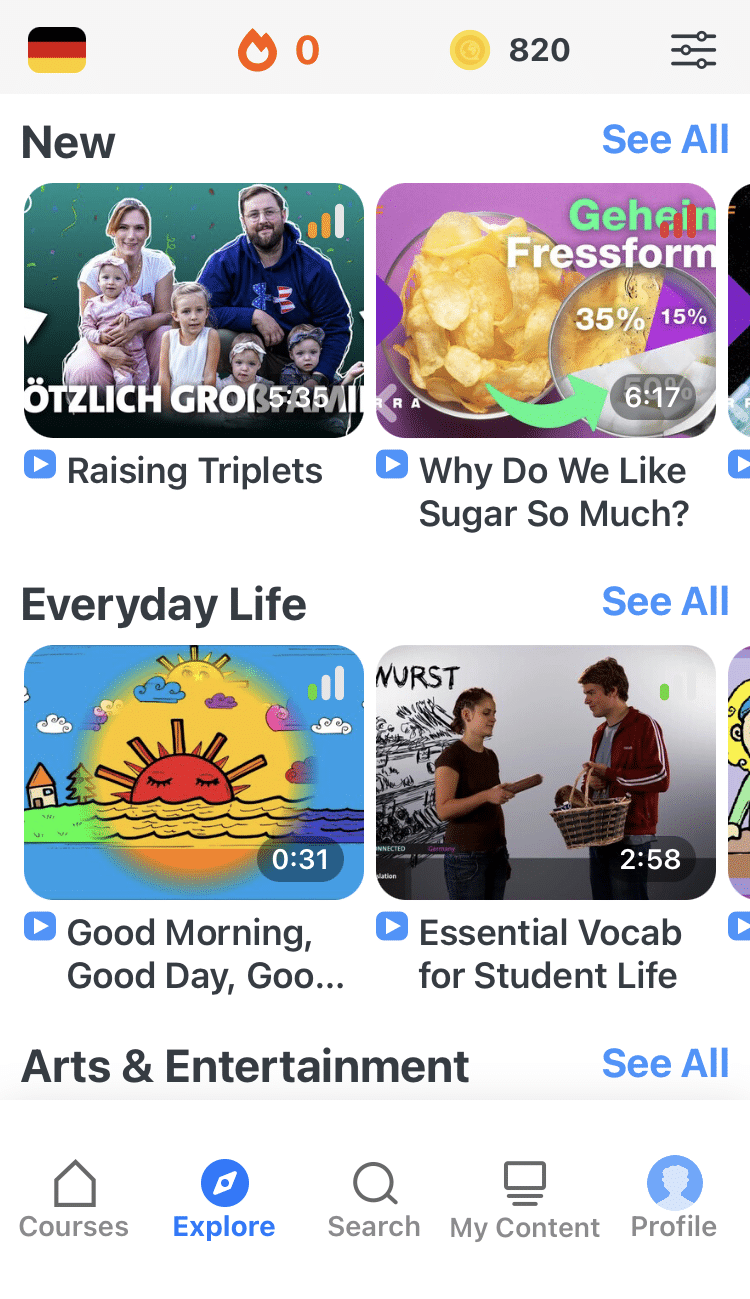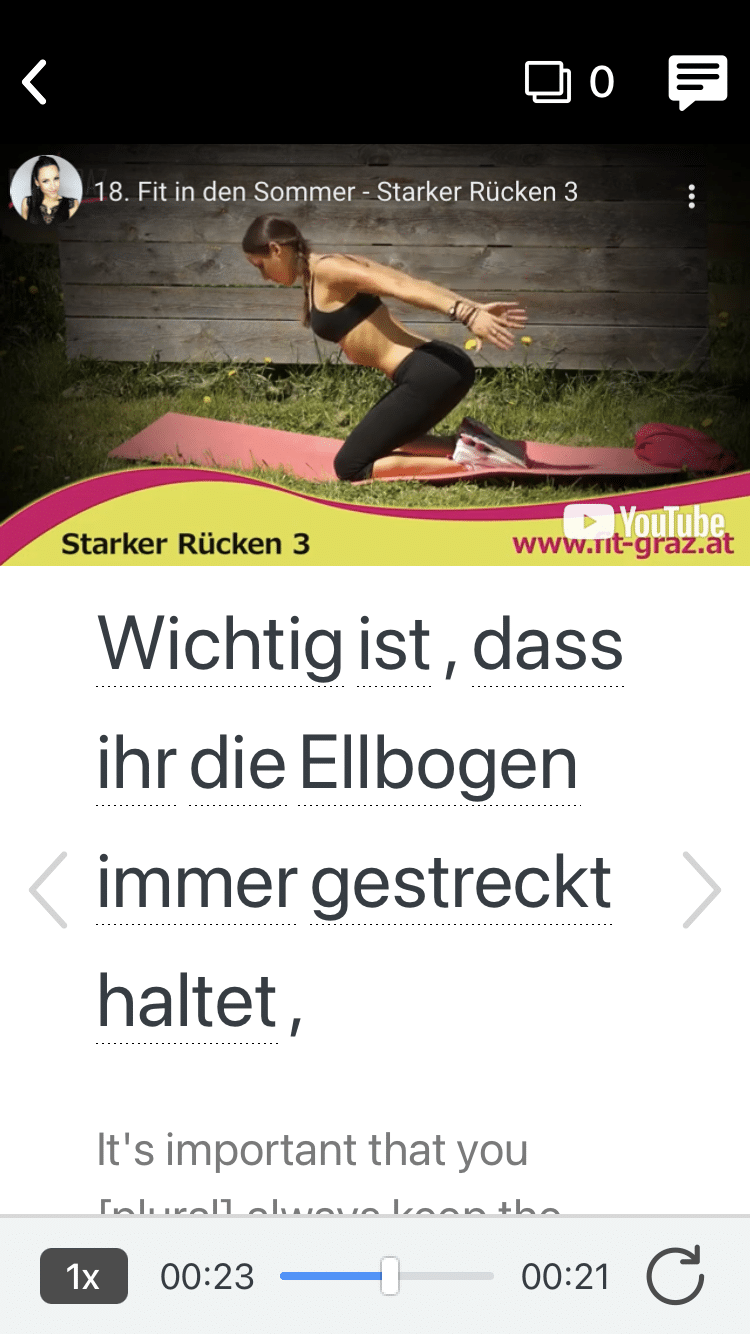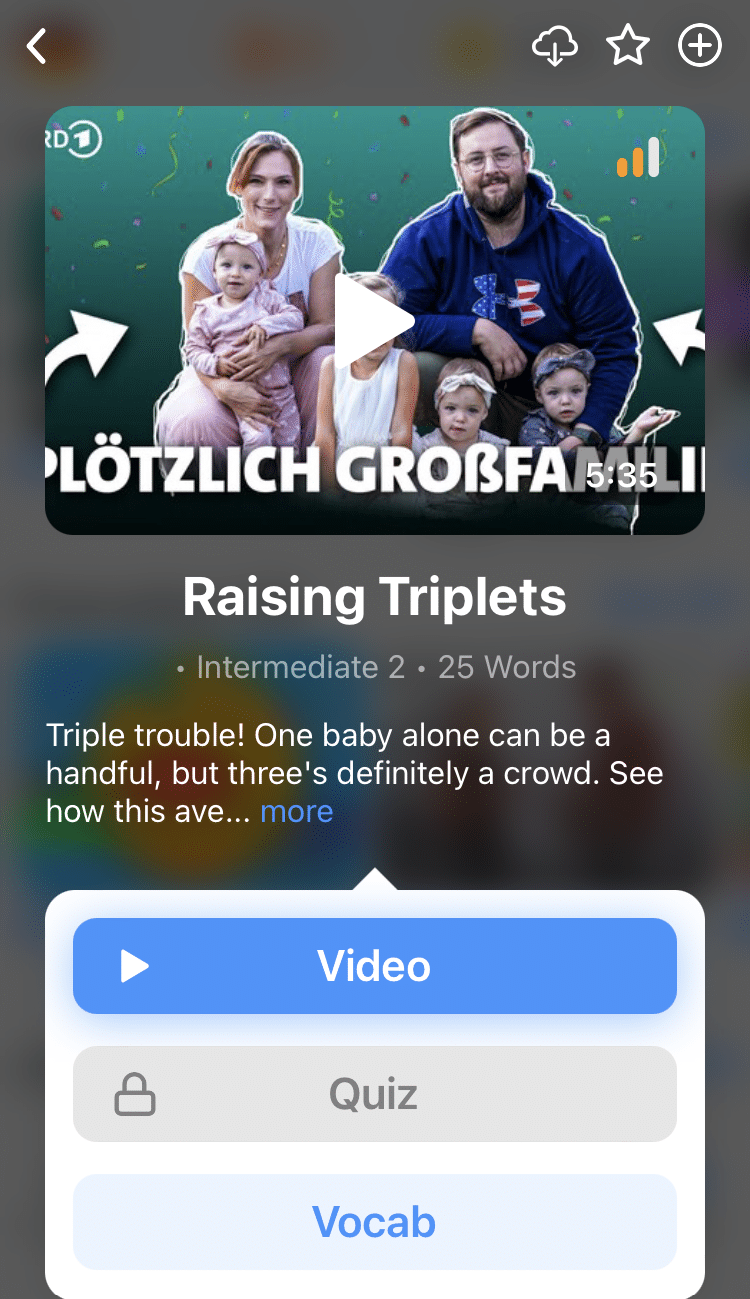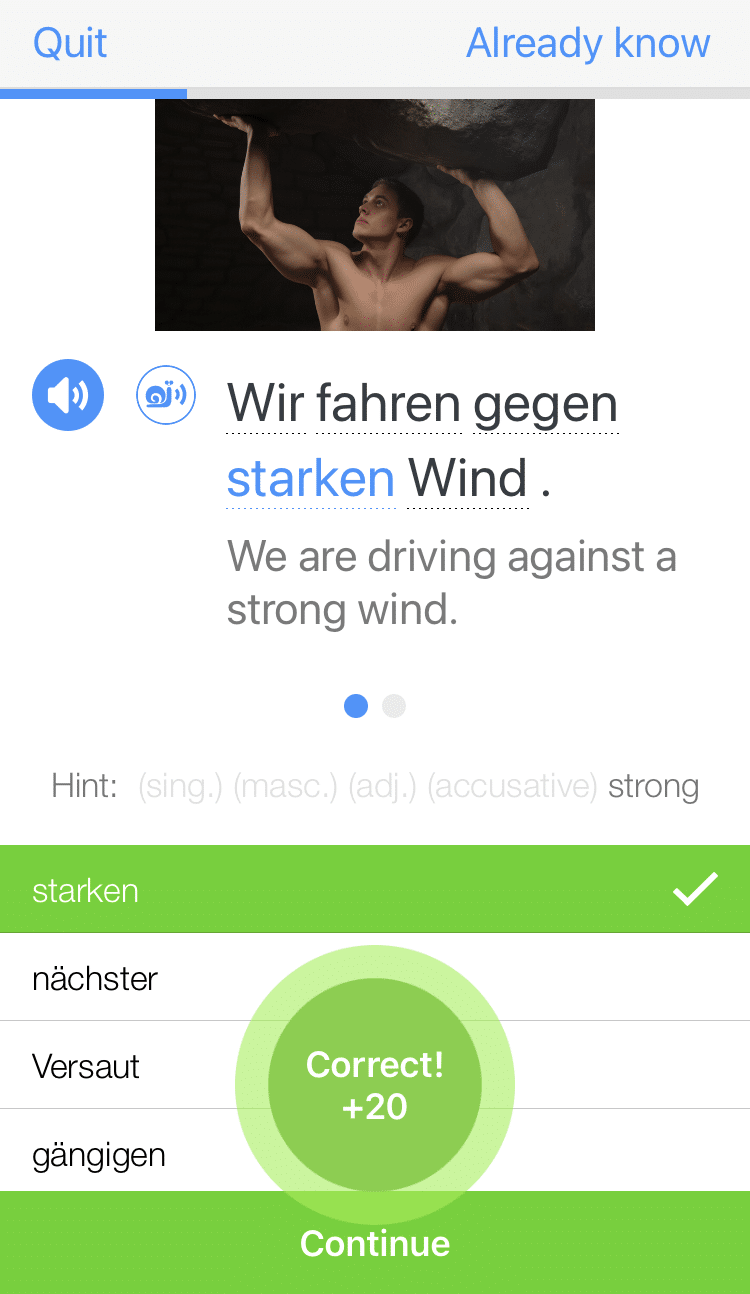
German Moods: Indicative, Imperative, Subjunctive
Are you sensitive to moods?
You know, like those created by intense people, cool art or striking German architecture?
Or are you just moody by nature?
If you’re learning German, you better be!
But it’s okay if you don’t feel like discussing your personal feelings or tastes, because we’re not going to be talking about emotional or aesthetic moods right now.
Right now we’re exploring grammatical moods.
Before you shout that that’s even worse, rest assured that we’re not going to do anything in this post to incur your wrath (or any other strong mood).
Besides, moods are an essential part of German grammar.
And just like with the other kind of moods, understanding them is important to being able to express yourself.
Download: This blog post is available as a convenient and portable PDF that you can take anywhere. Click here to get a copy. (Download)
Contents
- What Are “Moods” in German, and Why Do I Need to Understand Them?
- 1. The Indicative Mood
- 2. The Imperative Mood
- 3. The Subjunctive Mood
- And One More Thing...
What Are “Moods” in German, and Why Do I Need to Understand Them?
The mood of a sentence can indicate a lot about the speaker’s intention, and hence gives pretty good insight into what the speaker means to say.
In the case of German, what indicates a mood is the form of the verb in a sentence. To be more precise, this form indicates whether what’s being expressed is a fact, a command, a wish or an uncertainty.
Let’s Get Moody! The 3 German Moods and Their Uses
1. The Indicative Mood
When to Use the Indicative Mood
The purpose of the indicative mood is simply to make a statement of fact or to ask a question.
For example:
Der Josef singt jeden Tag. (Joseph sings every day.)
Singt der Josef jeden Tag? (Does Joseph sing every day?)
If you look at the first sentence, it’s simply stating a fact: that Joseph sings every day. This is called a declarative statement—it’s declaring something (which is a fact).
The second sentence, however, is a question. This is also known as an interrogative statement. In both these sentences, the verb singen (to sing) takes the simple present form.
Here are some more examples:
Ich habe jeden Tag um 18 Uhr Deutschunterricht. (I have German classes every day at 6 pm.)
Wann hast du Deutschunterricht? (When do you have German class?)
For simplicity, these examples are in the present tense. In the indicative mood, however, it’s also possible for the verb to take the past or future tense. In short, the verb can be in any tense form in the indicative mood, as long as the sentence is expressing a fact, a question or an opinion.
How to Form a Sentence in the Indicative Mood
In a declarative statement, the verb comes after the subject.
Ich denke, dass er sehr unhöflich ist. (I think that he is very rude.)
Notice that the verb denken (to think) is in the second position, following the subject.
In an interrogative statement, however, the verb stands conjugated in the first position.
Denkst du, dass er sehr unhöflich ist? (Do you think that he is rude?)
Notice that the verb denken (to think) is first in the sentence.
To get a better grasp of German sentence structure, you can use FluentU to study how native speakers use the language.
FluentU takes authentic videos—like music videos, movie trailers, news and inspiring talks—and turns them into personalized language learning lessons.
You can try FluentU for free for 2 weeks. Check out the website or download the iOS app or Android app.
P.S. Click here to take advantage of our current sale! (Expires at the end of this month.)
2. The Imperative Mood
When to Use the Imperative Mood
The imperative mood is primarily used to give instructions or a command.
For example:
Geh ins Bett! (Go to bed! — using du, or informal “you”)
Schließen Sie die Tür! (Close the door! — using Sie, or formal “you”)
Macht die Hausaufgaben! (Do the homework! — using ihr, or plural informal “you”)
Ess dein Brot! (Eat your bread! — using du)
Schlaft um 10! (Sleep at 10! — using ihr)
If you look at these sentences carefully, you’ll see that the verb is present in different forms of conjugation. This will be explained below when we look at the syntax of imperative sentences.
The tense in the imperative mood is always the present tense, and is mostly used for “you” (Sie/du — second person formal and informal) and “you all” (ihr — second person plural), as a command/instruction can be given only to a second person and not to oneself, or a third person.
How to Form a Sentence in the Imperative Mood
The verb is conjugated and placed in the first position. This conjugation pattern is done for the du, Sie and ihr forms only.
So how is the imperative conjugation formed?
- For the du form, the “st” is taken out from the present tense conjugation to form the imperative. For example, if we have the verb machen (to do), the du imperative would be mach (as machst is the present tense conjugation of machen). Additionally, it’s important to note that the word du doesn’t appear in the imperative command.
Mach die Hausaufgaben! (Do the homework!)
- For the Sie form, we retain the verb as it is in simple present tense. Additionally, the word Sie appears in the imperative statement.
Machen Sie die Hausaufgaben! (Do the homework!)
Note: Often, in the Sie form—since one is either speaking more formally or addressing an elderly person—to induce a bit of politeness, a bitte (please) is added to the sentence.
Machen Sie bitte die Hausaufgaben!
- For the ihr form, where the imperative sentence is usually addressed to multiple children or a group of people with whom you’re on informal terms, the verb takes the same form as the simple present tense. The word ihr doesn’t appear in the sentence.
Macht die Hausaufgaben! (Do the homework!)
3. The Subjunctive Mood
When to Use the Subjunctive Mood
The subjunctive mood—or Konjunktiv II as it’s called in German—is a mood used to express a hypothesis, a wish, something unreal or a regret.
For example:
Ich würde es machen. (I would do it.) [Regret]
Er würde den Film sehen. (He would see the movie.) [Wish]
Wir würden gern einkaufen gehen. (We would like to go shopping.) [Wish]
How to Form a Sentence in the Subjunctive Mood
The easiest way to use the subjunctive mood is to use the infinitive form of the verb, along with conjugated forms of würden (would), like in the sentences above.
If modal verbs are used, then a “t” is added to the stem:
- können (can) becomes könnten
- sollen (should) becomes sollten
- wollen (want) becomes wollten
- dürfen (may, for permission) becomes dürften
- müssen (must) becomes müssten
These then follow a similar sentence structure.
Du könntest mehr lernen. (You could learn more.) [Hypothesis]
Er wollte neue Schuhe kaufen. (He wanted to buy new shoes.) [Wish]
Ich sollte den Bus nehmen, jetzt bin ich verspätet! (I should have taken the bus, now I am late!) [Regret]
Of course, there are some verbs whose Konjunktiv II form or subjunctive form has to be memorized.
These verbs are:
- sein → wären (Konjunktiv II form)
- haben → hätten (Konjunktiv II form)
Wenn ich Millionär wäre, würde ich ein großes Haus kaufen.
(If I were a millionaire, I would buy a big house.) [Wish]
Wenn ich mehr Zeit hätte, könnte ich meine Hobbys üben.
(If I had more time, I would practice my hobbies). [Wish]
Such “wenn” sentences are formed with the German conditional tense.
Note that in the subjunctive mood, we always have two verbs. One verb is the subjunctive verb like wären, hätten or würden. Any of these three verbs could act as the auxiliary or helping verb. So these verbs mostly go in the second position and are conjugated according to the subject. The second verb comes in the infinitive form at the end.
Er würde es für dich gerne machen. (He would gladly do it for you.)
Wir hätten mehr Zeit rumzugehen. (We would have had more time to walk around.)
It’s important to learn how the German moods work and then learn them for real by seeing them in action. In order to continuously practice these moods, it helps to think of and see situations where they could be used.
A good way to practice the moods is by reading a lot of Märchen, or German fairy tales, as well as other Kurzgeschichten, or short stories.
Another good way to practice the moods is to use online exercises.
Getting your German verb basics firm and strong first will also help you dive into learning the moods of German.
All the very best!
Download: This blog post is available as a convenient and portable PDF that you can take anywhere. Click here to get a copy. (Download)
And One More Thing...
Want to know the key to learning German effectively?
It's using the right content and tools, like FluentU has to offer! Browse hundreds of videos, take endless quizzes and master the German language faster than you've ever imagine!
Watching a fun video, but having trouble understanding it? FluentU brings native videos within reach with interactive subtitles.
You can tap on any word to look it up instantly. Every definition has examples that have been written to help you understand how the word is used. If you see an interesting word you don't know, you can add it to a vocabulary list.
And FluentU isn't just for watching videos. It's a complete platform for learning. It's designed to effectively teach you all the vocabulary from any video. Swipe left or right to see more examples of the word you're on.
The best part is that FluentU keeps track of the vocabulary that you're learning, and gives you extra practice with difficult words. It'll even remind you when it’s time to review what you’ve learned.
Start using the FluentU website on your computer or tablet or, better yet, download the FluentU app from the iTunes or Google Play store. Click here to take advantage of our current sale! (Expires at the end of this month.)







